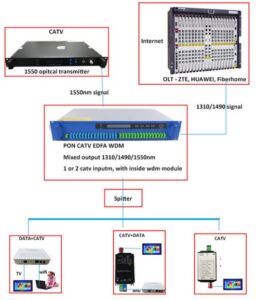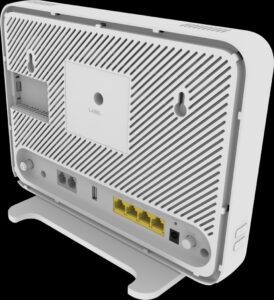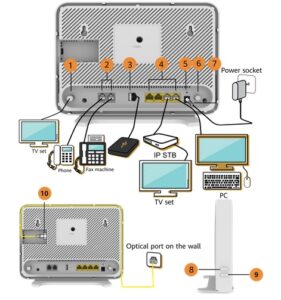Problems with CATV service in the FTTH PON system
Hello, everyone!
Today, I want to explain different problems with the CATV service in the FTTH PON system. This is the first article about this topic. Let’s get started.
Telecommunication operators usually offer triple-play services – HSI, VoIP and IPTV or/and CATV. In order to enable CATV via FTTH PON system, it is necessary to have CATV equipment in the headend or CO. These are external optical transmitters and optical amplifiers – EDFAs. There are different models of optical transmitter and EDFA. In the next figures, we can see examples of 1550 nm external optical transmitter and EDFA.


The following figure shows a simplified diagram of an FTTH PON system with CATV service. This is very good for understanding this concept.

The user must have an ONT device with an RF port, such as a bridge ONT HG8012H or a gateway ONTs HG8247H, EG8247W5, HG8143A5, etc. Previously, various mini nodes models were used for the CATV service. The next figure shows an example of ONT with an RF port.

The required optical power (CATV 1550 nm) on the ONT for the RF parameters to be good is from +2 to -8 dBm. In general, the practice has shown that the ideal RF parameters (MER > 39dB and BER < 10-9) for optical power are from +1 to -4 dBm. Also, ONT will enable CATV without problems and at -10 dBm. A problem with the CATV service may occur if the optical power is greater than + 2 dBm or less than -8 or -10 dBm. Problems with the CATV are various distortions in the picture on the TV – for example, frozen picture, no picture, etc. Higher optical power can damage the photodetector on the ONT.
In the next figure, we can see connecting cables.

After the basic information about the devices needed, I will explain the various problems with the CATV service in the FTTH PON system.
1. Problem with CATV with one user on one TV device
This problem can be a coaxial segment of the user’s network. If the CATV service is good on other TV devices, the problem is from the RF splitter to the TV device or only the TV device. First, we need to measure the RF parameters on the TV and based on that conclude where the problem is. If the RF parameters are good on the TV device, the problem is the TV device. Otherwise, the problem should be sought in the coaxial part of the network – from the RF splitter to the TV set. The problem may be RG6 coaxial cable, F or P coaxial connectors, or RF splitter. The problem is solved by replacement.
Thank you!


